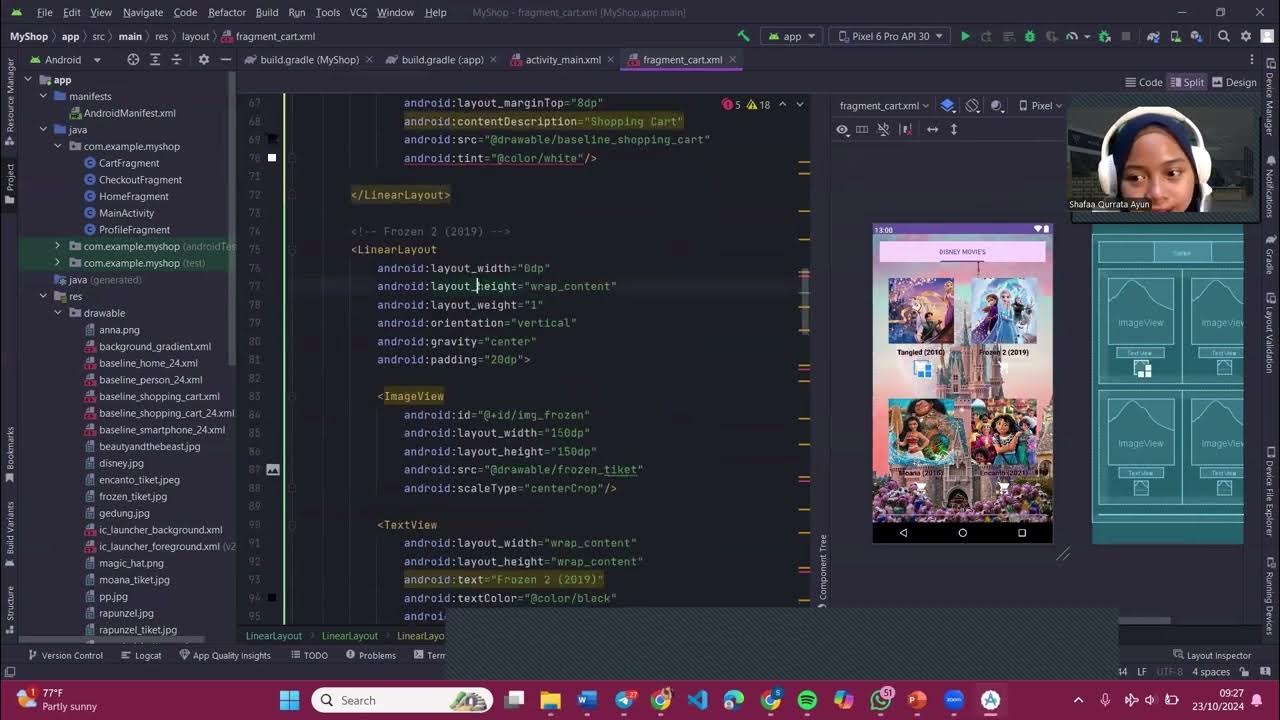Navigation In Multi-Module Android Apps - Why You're Doing It Wrong!
Summary
TLDRIn this video, the speaker discusses critical mistakes in navigating screens within multimodule Android applications, emphasizing the importance of decoupling navigation logic from feature modules. By showcasing a sample app setup, the speaker highlights how hardcoding navigation paths limits reusability. The recommended approach involves moving navigation responsibilities to the application module and using callbacks for better flexibility. The video also stresses best practices such as using navigation graphs and maintaining module isolation, making it clear that understanding these concepts is crucial for effective Android development. A free workshop is offered for further learning.
Takeaways
- 😀 Multimodule architecture promotes code reusability by allowing independent features to be integrated into different applications.
- 🔄 Hardcoding navigation routes within feature modules limits their reusability and creates unnecessary dependencies.
- 🧩 Navigation logic should be handled at the application module level rather than within individual feature modules to maintain independence.
- ⚙️ Using lambda functions for button clicks in feature modules decouples navigation from specific implementations, enhancing flexibility.
- 📦 Features should be designed as isolated modules that do not depend on the navigation structure of the overall application.
- 🚀 Defining navigation routes in the app module allows for easier adjustments and improved maintainability of the codebase.
- 🗺️ Consider using navigation graphs to group screens within features, which can simplify backstack management and navigation transitions.
- 📝 Always think of features as libraries when implementing a multimodule architecture to ensure they can be reused without modifications.
- 🔗 Avoid passing the NavController to feature modules to reduce coupling and make navigation more adaptable to different contexts.
- 📅 Developers are encouraged to start with a single-module architecture until they are confident in applying a multimodule setup in production.
Q & A
What is the main focus of the video?
-The video focuses on the common mistakes made in navigating between screens in a multimodule Android app and how to implement proper navigation to enhance reusability and flexibility.
What are the key modules mentioned in the app structure?
-The app structure includes an application module, a core navigation module, and two feature modules, Feature A and Feature B.
What mistake do many developers make regarding navigation in feature modules?
-Many developers hardcode navigation routes within feature modules, which restricts the reusability of these modules in different projects.
How does the speaker suggest improving navigation architecture?
-The speaker suggests decoupling navigation logic from feature modules and managing it within the application module, using Lambda functions to handle navigation events.
Why is it important to keep navigation routes in the application module?
-Keeping navigation routes in the application module prevents feature modules from being coupled to specific navigation libraries, enhancing flexibility and making it easier to reuse modules across different projects.
What does the speaker mean by 'multimodule architecture'?
-Multimodule architecture refers to structuring an application into separate modules that can be developed, tested, and maintained independently, facilitating better organization and scalability.
What benefit does decoupling navigation logic provide?
-Decoupling navigation logic allows for greater modularity and flexibility, enabling developers to reuse feature modules without relying on hardcoded navigation paths.
How does the speaker recommend managing button click events for navigation?
-The speaker recommends providing Lambda functions for button click events instead of directly using navigation controllers within feature modules.
What is a potential downside of a poorly implemented multimodule architecture?
-A poorly implemented multimodule architecture can lead to difficulties in managing dependencies, reduced reusability of modules, and increased complexity in navigation logic.
What does the speaker suggest for those new to multimodule architecture?
-The speaker advises sticking to a single module architecture until developers are confident in applying multimodule architecture principles, especially in production projects.
Outlines

Cette section est réservée aux utilisateurs payants. Améliorez votre compte pour accéder à cette section.
Améliorer maintenantMindmap

Cette section est réservée aux utilisateurs payants. Améliorez votre compte pour accéder à cette section.
Améliorer maintenantKeywords

Cette section est réservée aux utilisateurs payants. Améliorez votre compte pour accéder à cette section.
Améliorer maintenantHighlights

Cette section est réservée aux utilisateurs payants. Améliorez votre compte pour accéder à cette section.
Améliorer maintenantTranscripts

Cette section est réservée aux utilisateurs payants. Améliorez votre compte pour accéder à cette section.
Améliorer maintenantVoir Plus de Vidéos Connexes

Tasks, Back Stack & Launch Modes - Android Basics 2023

Flutter Tutorial for Beginners #23 - Maps & Routing

AR Indoor Navigation from scratch in under 30 minutes with Unity 6

PGPB Acara 7 Bottom Navigation View dan Fragment

PGPB Acara 6 TabLayout, ViewPger, dan Menu Options

The Top 5 Practices That Make My Android Architecture More Scalable
5.0 / 5 (0 votes)
